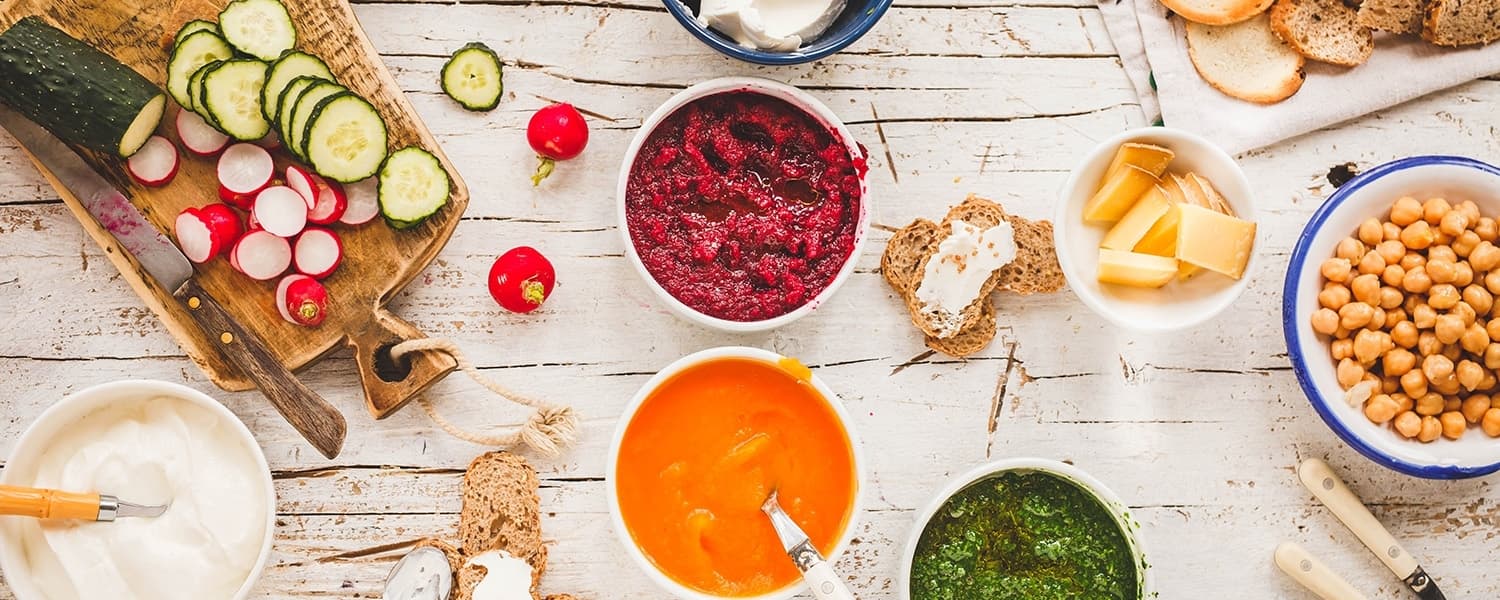
There’s something so comforting, warming, and nostalgic about soup. I mean, who doesn’t want chicken noodle soup when they’re sick, or chili after a cold day playing in the snow? Now, you might be thinking, “Yeah, I love soup...as an appetizer!” Soup is often not viewed as satiating enough to be a meal unless it’s full of cream and calories. Lighter soups are often paired with bread, salad, and even large entrées. However, soup done right can be filling, healthy, and all you need for you next meal. There are a few tricks I can teach you to make your next soup a “souper star!” Forgive me...I had to say it!
Veggies, veggies, veggies
Soup is the perfect vehicle to pack in an array of vegetables. Aim to include at least 3 vegetables of different colors, preferably. The color of vegetables is important, because it corresponds with various nutrients and phytochemicals your body needs. Each color contains vital nutrients, including vitamins, that play important roles in disease prevention and overall health. Also, veggies provide fiber to fill you up so you’re not as hungry throughout the rest of the day.
Pack in protein
It’s important to get adequate protein at every meal. In soup, it can come in a variety of forms. Meat, legumes, whole grains, Greek yogurt, and tofu can all be great additions to help your soup pack a powerful punch and feel like a real meal. For vegans or vegetarians, if your soup is still lacking, try adding in a vegan protein powder. This works well for strongly-flavored, thick soups like stews, curry, etc. However, make sure you don’t use a sweet protein powder if you want a salty flavor. I made the mistake of mixing vanilla vegan protein powder with lentil soup once. Yuck!
Replace the cream
Creamy chicken and wild rice, loaded potato, butternut bisque, creamy tomato...no doubt creamy based soups are popular and yummy! However, they’re also loaded with calories and saturated fat. Instead, replace the cream with nonfat Greek yogurt (add at the end to prevent curdling), a basic white roux, milk and cornstarch, silken tofu, or a vegetable puree (such as cauliflower, potato, or butternut squash). The type of sub you choose will depend on your soup, but you can definitely enjoy creamy soup without the heavy cream.
Watch the sodium
The biggest pitfall that keeps soup from entering the nutrition big leagues is the sodium content. Most soups are high in sodium. Even if you don’t add salt to your soup, it still might be super high from canned goods, processed foods, and salty seasoning mixes. The average American diet is super high in salt, and we’ve come to expect all food to be well-salted. To make soup a nutritious super star, aim to have your soup be maximum 700 mg per serving (preferably much lower). Skip canned items and go for fresh or frozen. If you need to get canned foods, buy a low-sodium version and rinse the contents well. Be careful with sodium-packed items like soy sauce, bouillon, spice mixes, etc. Now, once you take out the salt, it might seem like your soup is lacking in flavor. To make up for that, be sure to load up on fresh herbs and spices. For a salty flavor, my favorite substitute is vinegar, which taste salty without the sodium. My favorites are red wine and balsamic. Believe me, you can get big flavor without the salt shaker.
Keep it whole
Have fun with your soup and add in any seasonal whole foods you’d like. Soup is a great way to use leftovers or large garden harvests. Just aim to keep the ingredients whole. Whole grains, vegetables, lean meats, legumes, fresh herbs, and spices are all great. Try to avoid lots of processed foods like cream-based soups, mixes, processed cheese, etc. Often, when I have lots of veggies to use such as zucchini, broccoli, onions, green beans, potatoes, carrots, and celery, I’ll chop them all up and put them either in a tomato-based soup with a little balsamic vinegar or with chicken and lots of fresh herbs. Soup is one of those foods that just needs a big pot and fresh ingredients, but for recipe lovers, check out the soup recipes on our blog.
By making a few changes, you can have a delicious, comforting soup, healthy enough to make the nutrition big leagues. So grab a spoon and let's get cooking!
Megan Ostler MS, RDN
iFit Dietitian
Soup Recipes Samplings
Slow Cooker Beef and Barley Stew
http://www.ifit.com/blog/slow-cooker-beef-and-barley-stew/
Skinny Loaded Baked Potato Soup
http://www.ifit.com/blog/skinny-loaded-baked-potato-soup/
Thai Carrot Soup
http://www.ifit.com/blog/thai-carrot-soup/
WARNING: This post is not intended to replace the advice of a medical professional. The above information should not be used to diagnose, treat, or prevent any disease or medical condition. Please consult your doctor before making any changes to your diet, sleep methods, daily activity, or fitness routine. iFit assumes no responsibility for any personal injury or damage sustained by any recommendations, opinions, or advice given in this article.

